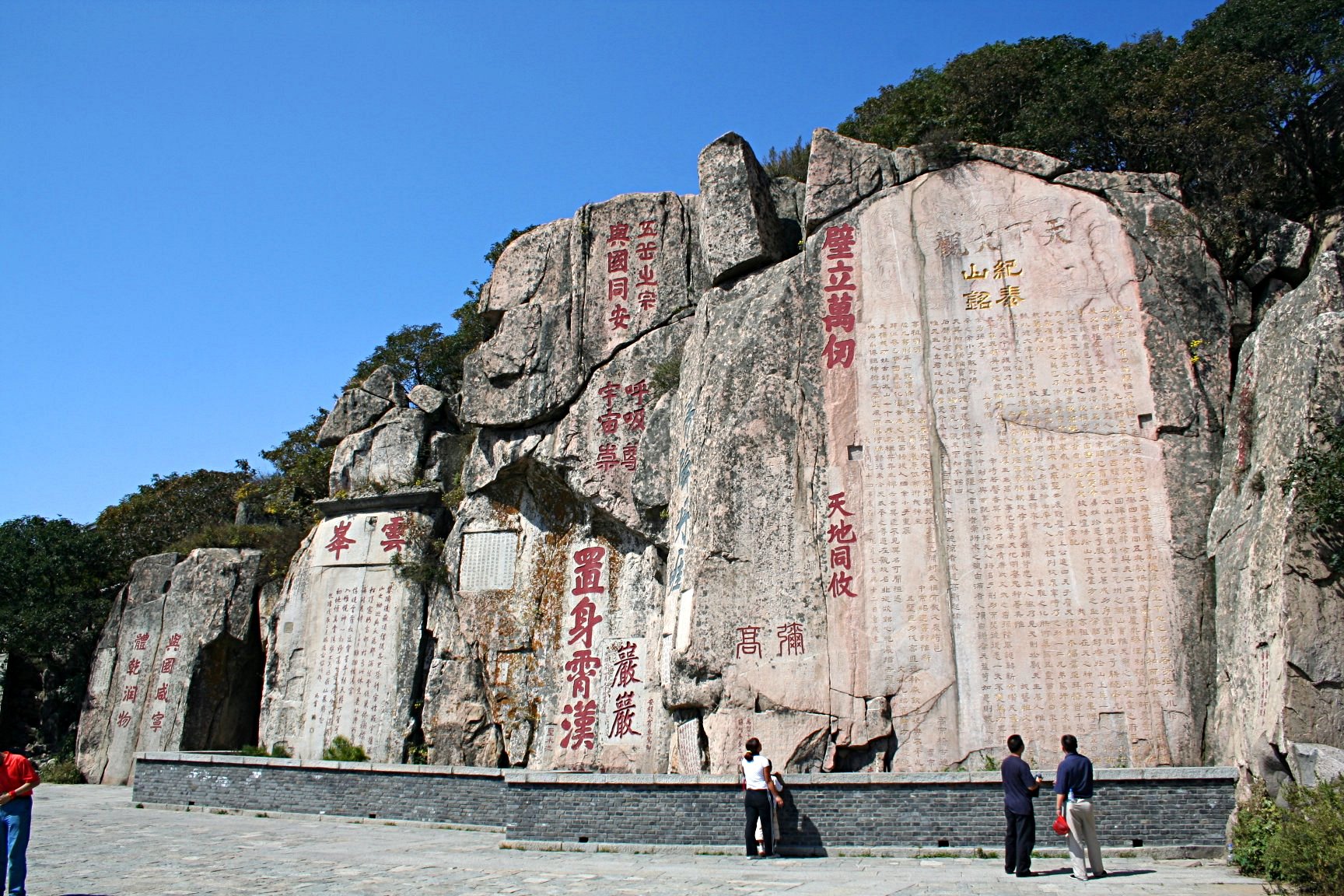
These postcard sent to me by Li Zhe from Postcrossing
nother UNESCO World Heritage Postcard i received from a Postcrossing friend. Mount Tai entered UNESCO World Heritage Site 1987. Mount Tai resided in China Shandong Province, one of the Five Sacred Mountains with rich historical and cultural. It is associated with sunrise, birth, and renewal, and is often regarded the foremost of the five. The temples on its slopes have been a destination for pilgrims for 3,000 years. Religious worship of Mount Tai has a tradition of 3,000 years
 Stone inscriptions at Mount Tai
Stone inscriptions at Mount TaiThe Temple of the God of Mount Tai, known as the Dai Temple (Dai Miao), is the largest and most complete ancient building complex in the area. It is located at the foot of Mount Tai in the city of Tai'an and covers an area of 96,000 square meters. The temple was first built during the Qin Dynasty. Since the time of the Han Dynasty (206 BC – 220 AD), its design has been a replica of the imperial palace, which makes it one out of three extant structures in China with the features of an imperial palace (the other two are the Forbidden City and the Confucius Temple in Qufu). The temple has five major halls and many small buildings. The centerpiece is the Palace of Heavenly Blessings (Tian Kuang), built in 1008, during the Northern Song Dynasty. The hall houses the mural painting "The God of Mount Tai Making a Journey", dated to the year 1009. The mural extends around the eastern, western and northern walls of the hall and is 3.3 metres high and 62 metres long. The theme of the painting is an inspection tour by the god. Next to the Palace of Heavenly Blessings stand the Yaocan Pavilion and the entrance archway as well as the Bronze Pavilion in the northeast corner. The Dai Temple is surrounded by the 2,100 year-old Han Dynasty cypresses.

Information and Image Obtained From Wikipedia, the free encyclopedia
No comments:
Post a Comment